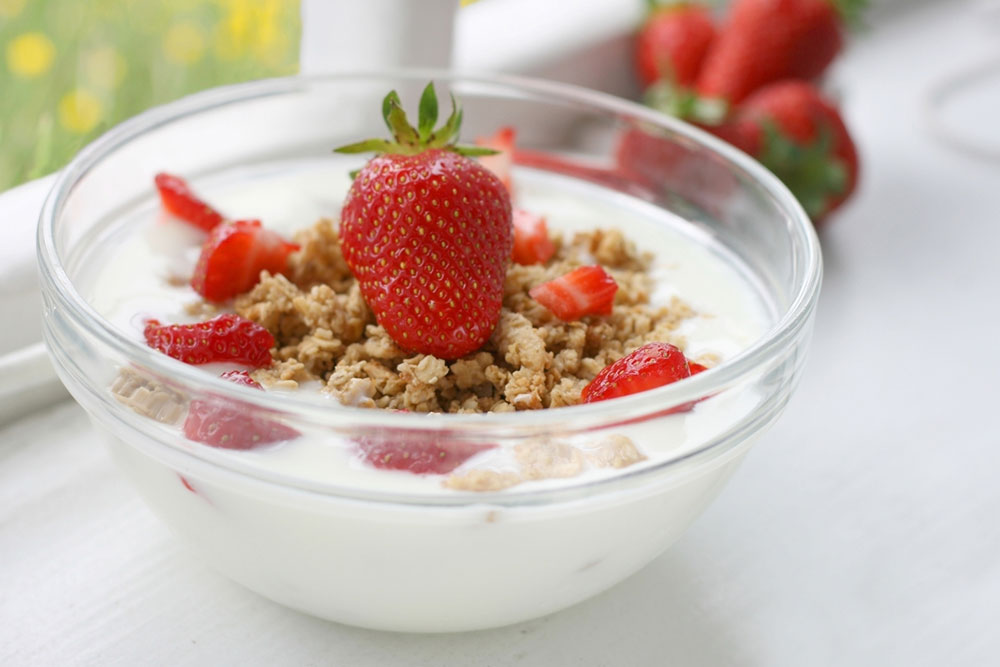11 foods that can help reduce blood pressure

Many people opt for meal plans with less salt and processed foods when trying to reduce blood pressure. While this is a step in the right direction, it may not be enough. Adopting a heart-healthy nutrition plan is a more effective approach to managing high blood pressure. This involves including foods and beverages that lower blood sugar and cholesterol levels, thus helping reduce blood pressure. To improve overall health, here are some foods that can help one get started on a journey.
Garlic
Garlic is a popular food known to help manage blood pressure due to its high allicin content. This substance contains antioxidants and antibacterial properties. In addition, it helps in managing hypertension by relaxing the blood vessels, which in turn allows blood to flow more freely. To get the benefits of garlic in reducing blood pressure, it is recommended to use fresh garlic cloves instead of processed or canned ones. Fresh cloves can be added to a variety of dishes, including soups, stir-fries, stews, pasta, and curries, to enhance the flavor.
Fat-free or low-fat yogurt
Yogurt is one of the most nutritious foods as it contains probiotics and calcium. The probiotics promote gut health and enhance the function of the digestive and immune systems. In addition, intake of nonfat or low-fat yogurt can aid in managing blood pressure. The best way to incorporate this food into daily meals is by adding it to smoothies, fruits, and cereals. To achieve the best results, avoid yogurts that contain artificial sweeteners, sugar, and flavors.
Turmeric
This herb lends an aroma and flavors to many dishes. In addition, it contains curcumin, which has powerful anti-inflammatory and antioxidant properties. It helps to lower blood pressure levels by managing excess platelet aggregation in the blood vessels. One can add turmeric powder to curries, soups, and stews to ensure they get the optimal health benefits of curcumin regularly.
Bananas
Excessive intake of sodium is one of the causal factors for high blood pressure. The high level of sodium in the blood increases blood pressure by absorbing more water into the blood vessels, further increasing the volume of blood. The higher the volume of blood, the higher the pressure. An effective way to manage the high sodium level is by eating bananas. This fruit is high in potassium, which helps remove excess sodium from the blood and relaxes blood vessel walls to lower blood pressure. One can have bananas as a snack or add them to pancakes, smoothies, cereals, or make banana bread.
Pistachios
Nuts such as pistachios are one of the richest sources of healthy fats, which help increase the level of good cholesterol in the body. Both these factors improve heart health and lower blood pressure levels. Pistachios, in particular, contain a compound that helps relax the blood vessels, making it easier for the blood to flow through the body, further managing blood pressure. One can add these nuts to salads and pesto or make nut butter at home with added nuts like walnuts and almonds. However, avoid choosing salted pistachios as they contain high amounts of sodium, which may spike blood pressure levels.
Fatty fish
Mackerel, tuna, and salmon are some of the richest sources of omega-3 fatty acids, which are healthy fats. These can help improve heart health, lower bad cholesterol levels, and reduce blood pressure. To get the best benefits of fatty fish, it is recommended to avoid frying them and instead have them baked or grilled.
Celery seeds
Celery seeds are another natural remedy for managing blood pressure levels. These seeds are known to have potent diuretics, which can help relax the blood vessels and reduce lower blood pressure. It is recommended to consult a doctor before trying celery seeds to avoid any potential allergic reactions or side effects.
Berries
Blueberries, strawberries, raspberries, and blackberries add a dash of color to one’s meals. Moreover, the high nutrient density of berries makes them an excellent food choice for managing several health conditions, including high blood pressure. The high percentage of antioxidants and nitric oxide content, particularly found in blueberries, helps increase blood flow and lowers blood pressure. Snacking on these berries is the best way to eat them, but they can also be added to oatmeal, cereals, yogurt, or salads for a delicious and healthy meal.
Cinnamon
Although this spice is popular during fall and autumn, it has several health benefits that make it an essential ingredient to use all year round. Cinnamon not only adds aroma and flavor to foods and beverages but also helps in managing high blood pressure. Whole fried cinnamon can be added to stews, gravies, soups, or rice preps. One can also use cinnamon powder in coffee, smoothies, or healthy baked goods.
Flax seeds
These seeds contain high levels of alpha-linolenic acid and lignans, which help in managing hypertension by reducing blood pressure levels. In addition, the lignans also help in lowering blood sugar and bad cholesterol. Adding flax seeds to salads, cereals, and soups can also help to improve digestive health. To avoid side effects, eat roasted flaxseeds, not processed or raw ones. In addition, pregnant women should avoid flax seeds and flaxseed oil. For those going through surgery, it is recommended to abstain from eating flax seeds at least two weeks prior to the procedure, as the oil may slow down the blood’s ability to clot.
Hibiscus tea
This herbal tea has several health benefits due to its anti-inflammatory and antioxidant properties. The tea also contains heart-healthy compounds such as anthocyanins and polyphenols, which help reduce blood pressure levels. However, one must have this tea in moderation within the recommended safety limits. Although uncommon, some people may experience side effects such as stomach pain, gas, and constipation. Also, this tea is not recommended for pregnant or lactating women.